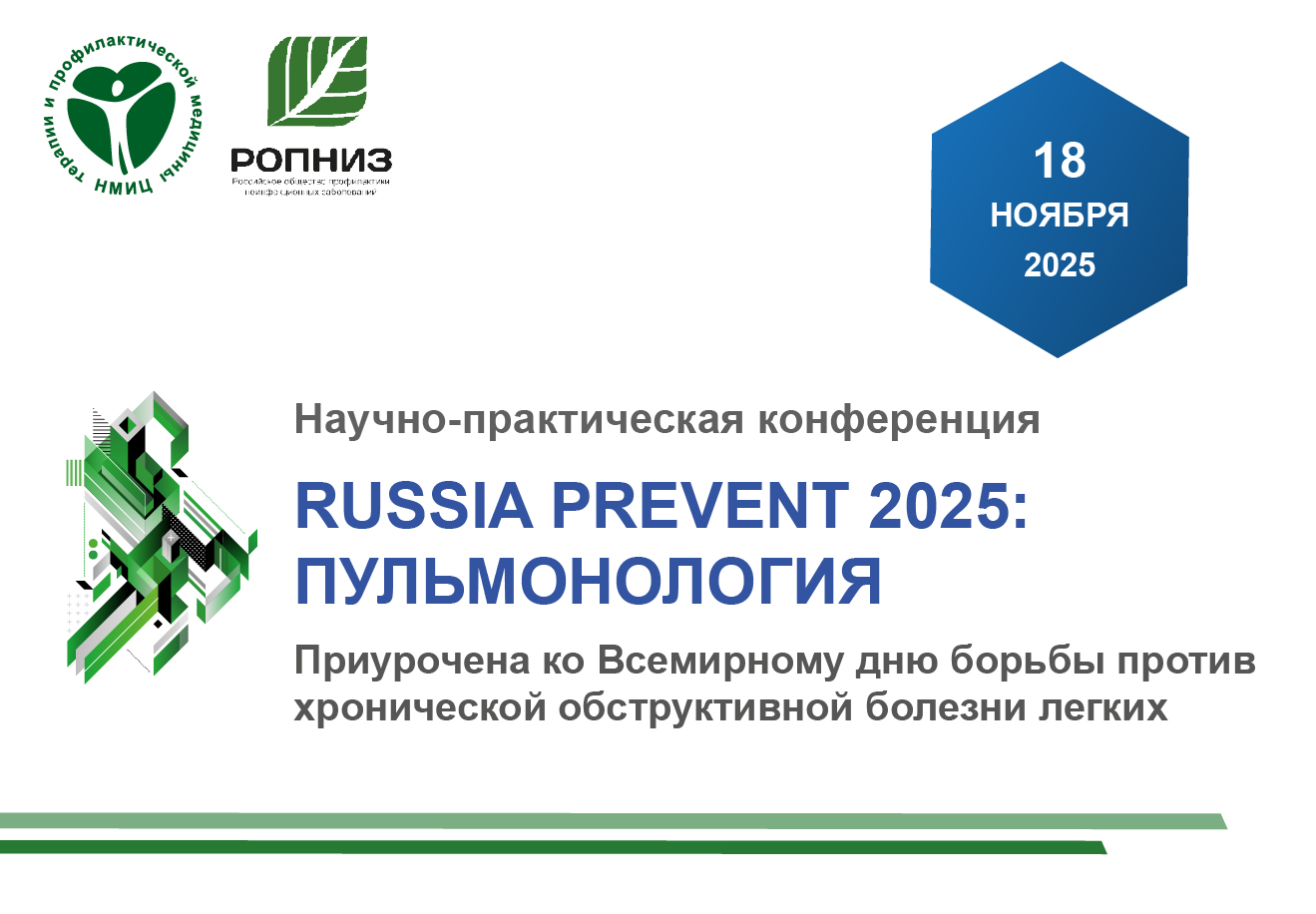Clinical use of the new biomarker ST2 in patients with chronic heart failure of ischemic genesis: an exercise test
https://doi.org/10.15829/1728-8800-2019-4-12-18
Abstract
Aim. To study the role of soluble stimulating growth factor expressed by gene 2 (sST2), at rest and after exercise at the end of six-minute walk distance (6MWD) in predicting the development of adverse cardiovascular events (CVA) in patients with coronary artery disease with chronic heart failure (CHF) for 12 months of prospective observation.
Material and methods. We included 35 patients with CHF of ischemic genesis (32 men) with 44 left ventricular ejection fraction [35; 52]% (average age 62 [57; 67] years). The concentration of sST2 in serum wasdetermined by enzyme immunoassay prior to and immediately after completion of 6MWD.
Results. After 12 months of prospective observation, patients were divided into 2 groups depending on the CHF genesis. Group 1 (n=15) included patients with an unfavorable CHF course, group 2 (n=20) included patients without adverse CVA. In patients of group 1, the level of sST2 reached 39,68 [32,28; 52,32] ng/ml, which is 26,2% higher than (p=0,007) the similar parameter in patients of group 2 — 29,29 [26,34;33,78] ng/ml. According to the ROC-analysis, the level of sST2 >33,14 ng/ml can be considered as a marker of the development of adverse CVA for 12 months of observations (sensitivity — 73,3%, specificity — 75,0%, area under the ROC curve — 0,77, p=0,002). After 6MWD patients with unfavorable CHF had a tendency (p=0,211) for an increase in sST2 level by 9,3% from 39,68 [32,28; 33,78] ng/ml to 43,75 [36,85; 54,80] ng/ml. In patients with a favorable course of CHF, the level of sST2 did not change, reaching 29,29 [26,34; 33,78] ng/ml and 29,43 [23,79; 34,79] ng/ml after 6MWD. According to the ROC-analysis, it was found that in patients with coronary artery disease and CHF, determining of sST2 concentration in the blood after 6MWD allowed to achieve higher levels of specificity and sensitivity of stratification risk method of adverse CVA — 86,7% and 85,0%, respectively (the area under the ROC curve is 0,86, p<0,0001).
Conclusion. Thus, the level of sST2 can be considered as a noninvasive marker for predicting of unfavorable cardiovascular diseases in patients with CHF and intermediate/reduced left ventricular ejection fraction. Concentrations of sST2, determined after exercise, have ahigher prognostic value for the stratification of the risk of an adverse course of CHF in this cohort of patients.
About the Authors
E. V. GrakovaTomsk National Medical Research Center
Russian Federation
Tomsk.
K. V. Kopieva
Tomsk National Medical Research Center
Russian Federation
Tomsk.
А. T. Teplyakov
Tomsk National Medical Research Center
Russian Federation
Tomsk.
O. N. Ogurkova
Tomsk National Medical Research Center
Russian Federation
Tomsk.
M. V. Soldatenko
Tomsk National Medical Research Center
Russian Federation
Tomsk.
A. A. Garganeeva
Tomsk National Medical Research Center
Russian Federation
Tomsk.
References
1. Ageev FT. Diastolic heart failure: 10 years of Dating. Serdichnaya nedostatochnost'. 2010;11:5-6. (In Russ.)
2. Ageev FT, Danielyan MO, Mareev VU, et al. Patients with chronic heart failure in the Russian outpatient practice: features of the contingent, diagnosis and treatment: study of the ERA-O-CHF. Serdichnaya nedostatochnost. 2004;5(1):4-7 (In Russ.)
3. Bokerija OL, Kislicina ON. Heart failure and sudden cardiac death. Annaly aritmologii. 2013;10(3):144-54. (In Russ.)
4. Teplyakov AT, Rybalchenko EV, Suslova TE, et al. The role of cytokines in restenosing coronary stents and the efficiency of its secondary prophylaxis with statins. Terapevticheskij arhiv. 2008;80(9):45-51. (In Russ.)
5. Belenkov JuN, Ageev FT, Mareev VJu. Serdechnaja nedostatochnost'. Neurohormones and cytokines in heart failure: a new theory of the old disease? Serdichnaya nedostatochnost'. 2000;1(4):8-16. (In Russ.)
6. Ponikowski P, A Voors A, D Anker S, et al. 2016 ESC guidelines for the diagnosis and treatment of acute and chronic heart failure. Russian Journal of Cardiology. 2017;1:7-81. (In Russ.)
7. Sabatine MS, Morrow DA, Higgins LJ, et al. Complementary roles for biomarkers of biomechanical strain ST2 and N-terminal prohormone B-type natriuretic peptide in patients with ST elevation myocardial infarction. Circulation. 2008;117:1936-44. doi:10.1161/CIRCULATIONAHA.107.728022.
8. Ky B, French B, Levy WC, et al. Multiple biomarkers for risk prediction in chronic heart failure. Circ Heart Fail. 2012;5(2):183-90. doi:10.1161/CIRCHEARTFAILURE.111.965020.
9. Gaggin HK, Szymonifka J, Bhardwaj A, et al. Head-to-head comparison of serial soluble ST2, growth differentiation factor-15, and highly-sensitive troponin T measurements in patients with chronic heart failure. JACC Heart Fail. 2014;2(1):65-72. doi:10.1016/j.jchf.2013.10.005.
10. Januzzi JL, Pascual-Figal D, Daniels L. ST2 testing for chronic heart failure therapy monitoring: the international ST2 consensus panel. Am J Cardiol. 2015:115(7Suppl):70B-5. doi:10.1016/j.amjcard.2015.01.044.
11. O'Meara E, Prescott MF, Rouleau JL, et al. Association between sST2 Levels and Cardiovascular Outcomes and Effect of Sacubitril/Valsartan on sST2 Levels: Results from the PARADIGM-HF Trial. Journal of Cardiac Failure. 2016;22(8):29-30. doi:10.1016/j.cardfail.2016.06.094.
12. Meijers WC, de Boer RA, van Veldhuisen DJ, et al. Peacock Biomarkers and low risk in heart failure. Data from COACH and TRIUMPH. Eur J Heart Fail. 2015;17(12):1271-82. doi:10.1002/ejhf.407.
13. Bayes-Genis A, Januzzi JL, Gaggin HK, et al. ST2 pathogenetic profile in ambulatory heart failure patients. J Card Fail. 2015;21 (4):355-61. doi: 10.1016/j.cardfail.2014.10.014.
14. Pascual-Figal DA, Ordonez-Llanos J, Tornel PL, et al. Soluble ST2 for predicting sudden cardiac death in patients with chronic heart failure and left ventricular systolic dysfunction. J Am Coll Cardiol. 2009;54(23):2174-9. doi:10.1016/j.jacc.2009.07.041.
Review
For citations:
Grakova E.V., Kopieva K.V., Teplyakov А.T., Ogurkova O.N., Soldatenko M.V., Garganeeva A.A. Clinical use of the new biomarker ST2 in patients with chronic heart failure of ischemic genesis: an exercise test. Cardiovascular Therapy and Prevention. 2019;18(4):12-18. (In Russ.) https://doi.org/10.15829/1728-8800-2019-4-12-18

























































